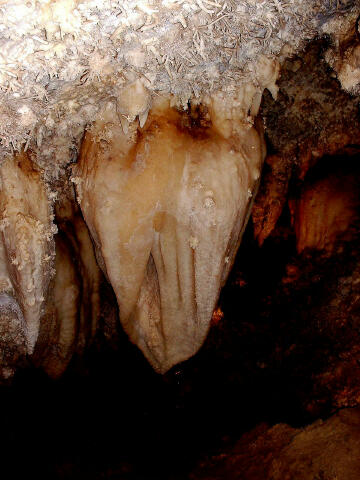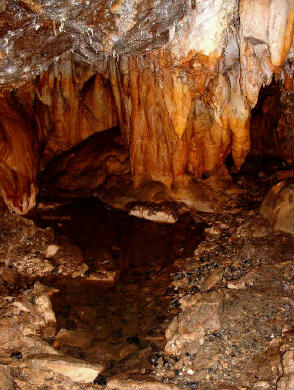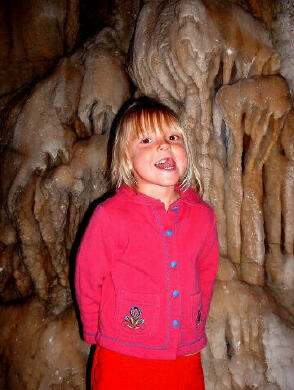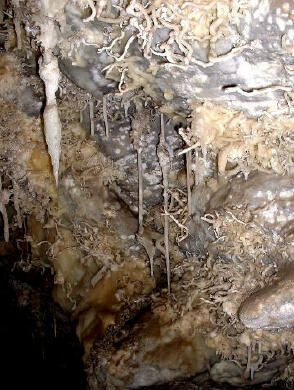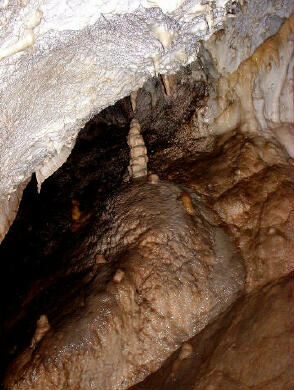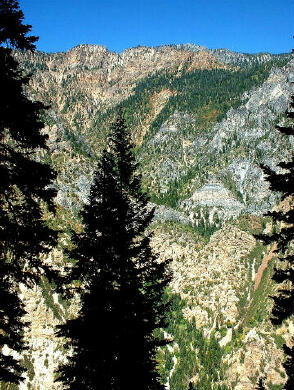[ Homepage ] [ Introduction ] [ Warning ] [ Ratings ] [ Ethics ] [ Feedback ] [ Updates ]
Timpanogos Cave National Monument has two picnic areas on the banks of the American Fork River and a Visitors Center. Tickets must be purchased online or at the trailhead to visit the cave as part of a ranger guided tour. Tour groups consist of a maximum of 20 per group. The trail to the cave begins at the Visitors Center and follows a 1 1/2 mile long paved route that gains 1065 feet in elevation. The actual tour through the cave takes 40 minutes. The complete round trip will require approximately 3 hours. The cave is open mid-May to mid-October, weather permitting. The Visitor
Center is open daily, during the cave tour season, from 7:00 a.m. to 6:00 p.m. The Visitor
Center winter hours are 8:30 a.m. to 5:00 p.m. everyday except Thanksgiving Day, December
25, and the visitor center closes early on December 24.
Timpanogos Cave National Monument is located off I-15 at the Alpine/Highland exit (exit #287). Exit the Interstate and follow State Road 92 for 10 miles as it heads towards the Wasatch Mountains and climbs up American Fork Canyon to the Timpanogos Cave National Monument Visitors Center. The trail to the cave begins at the Visitors Center. There is a fee station located at the mouth of American Fork Canyon that charges a fee per vehicle to visit the canyon. This fee is in addition to the ticket price of visiting the cave.
Advanced
Caving Tour: 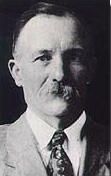 Over 100 years ago no one knew that there were caves hidden in American
Fork Canyon. Then, on a fall day in 1887, 40-year-old Martin Hansen, a Mormon settler from
American Fork, Utah, accidentally discovered the first cave. Hansen was cutting timber
high on the canyon's south slopes when, according to one popular version of the story, he
came across the tracks of a mountain lion. Following the tracks to a high ledge, he found
an opening in the rock - the entrance to the small cave that would be named after him.
Hansen did not enter the cave that day, but he returned to later explore. To allow others
to get a firsthand look at the cave, Hansen and others hacked out a rough and hazardous
trail straight up the mountainside. By all accounts, the first visitors found the cave
exceptionally decorated with colorful deposits of flowstone and other formations. Within
only a few years, however, souvenir hunters and miners had stripped the cave almost bare,
selling much of their stolen treasures to museums and universities and to commercial
enterprises who made decorative objects from the cave deposits.
Over 100 years ago no one knew that there were caves hidden in American
Fork Canyon. Then, on a fall day in 1887, 40-year-old Martin Hansen, a Mormon settler from
American Fork, Utah, accidentally discovered the first cave. Hansen was cutting timber
high on the canyon's south slopes when, according to one popular version of the story, he
came across the tracks of a mountain lion. Following the tracks to a high ledge, he found
an opening in the rock - the entrance to the small cave that would be named after him.
Hansen did not enter the cave that day, but he returned to later explore. To allow others
to get a firsthand look at the cave, Hansen and others hacked out a rough and hazardous
trail straight up the mountainside. By all accounts, the first visitors found the cave
exceptionally decorated with colorful deposits of flowstone and other formations. Within
only a few years, however, souvenir hunters and miners had stripped the cave almost bare,
selling much of their stolen treasures to museums and universities and to commercial
enterprises who made decorative objects from the cave deposits.
Not until 1915 was a second cave discovered. That summer a group of families from Lehi, Utah, came to American Fork Canyon for a day's outing. While the rest of the group explored Hansen Cave, teenagers James W. Gough and Frank Johnson climbed around the rocky slope outside. By chance, they stumbled across a hole not far from the entrance to Hansen Cave. It was the entrance to Timpanogos Cave. Many persons explored the cave, seeing its exquisite formations, including the Great Heart of Timpanogos, but for some reason knowledge of the cave and its whereabouts faded. Then on August 14, 1921, Timpanogos Cave was rediscovered. An outdoor club from Payson, Utah, had come to American Fork Canyon to see Hansen Cave and investigate rumors of a second cave. It was Vearl J. Manwill, a member of the club, who confirmed the rumors by rediscovering the Timpanogos Cave. That very night, "...by the light of campfire, [we] discussed our find," Manwill wrote, "and talked about ways and means to preserve its beauty for posterity instead of allowing it to be vandalized as Hansen's Cave had been." The people around that fire dedicated themselves to the cave's preservation. The excitement of rediscovering the natural wonders of Timpanogos Cave had not yet died when a third cave - Middle Cave - was found that fall. George Heber Hansen and Wayne E. Hansen, son and grandson of Martin Hansen, were in American Fork Canyon hunting deer. As they looked through binoculars at the south slope of the canyon from the opposite side they spotted an opening near the other two cave entrances. Within days they returned to this new cave - Middle Cave - with a large exploring party equipped with ropes, flashlights, and candles. In the party was pioneer cave-finder Martin Hansen, by then 74 years old. The hopes of all those who sought to protect and preserve the caves of American Fork Canyon were realized a year after Timpanogos and Middle Caves were discovered. In 1922, at the urgings of Utah citizens, the US Forest Service, and others, President Warren G. Harding issued a proclamation establishing Timpanogos Cave National Monument. Since that time the caves have been officially recognized as natural features of national significance and extraordinary scenic and scientific value.
[ Homepage ] [ Introduction ] [ Warning ] [ Ratings ] [ Ethics ] [ Feedback ] [ Updates ] © Copyright 2000-, Climb-Utah.com |
